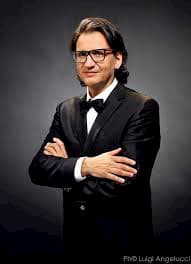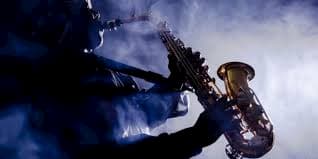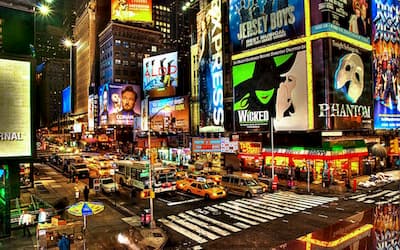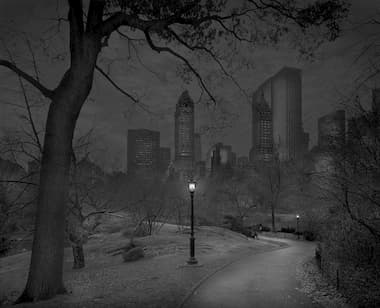
Roberto Molinelli
How to you show the various facets of a great and complex city? In his Four Pictures from New York, composer Roberto Molinelli takes a range across a day, with a focus on the inherent music of the city.
The Italian composer wrote his tribute to the city as it ‘appears in the eyes of a European in love with America, American music, and culture.’ It’s not New York as a New Yorker would write it, but New York with an Italian touch.

Sunrise and the Empire State Building
The first movement, Dreamy Dawn, gives us a radiant and clear sunrise, but one that is filtered through the skyscrapers of the city.
Molinelli: Four Pictures from New York: No. 1. Dreamy Dawn (Federico Mondelci, saxophone; Basinia Shulman, piano; Dmitry Ilugdin, piano; Moscow Chamber Orchestra; Constantine Orbelian, cond.)
And then, as a proper tourist does, you go to sleep and come out again in the early evening. Our composer takes us to a Tango Club, where he summons up the spirit of Astor Piazzolla, Argentine in soul but New Yorker in habitation.
Molinelli: Four Pictures from New York: No. 2. Tango Club (Federico Mondelci, saxophone; Basinia Shulman, piano; Dmitry Ilugdin, piano; Moscow Chamber Orchestra; Constantine Orbelian, cond.)

Jazz Sax
The lush jazz ensemble appears next, with the sax against an accompaniment of piano, double bass, and drums. It seems like it’s the winding down of a day in the big city.
Molinelli: Four Pictures from New York: No. 3. Sentimental Evening (Federico Mondelci, saxophone; Basinia Shulman, piano; Dmitry Ilugdin, piano; Moscow Chamber Orchestra; Constantine Orbelian, cond.)

Broadway Theatre, New York
But then you step out onto the street and life becomes exciting again – it’s as though you’ve stepped into a Broadway film – the lights, the dazzle, the glitter – and you’re in Times Square with the traffic, people hurrying by, and the city around you in all its glory.
Molinelli: Four Pictures from New York: No. 4. Broadway Night (Federico Mondelci, saxophone; Basinia Shulman, piano; Dmitry Ilugdin, piano; Moscow Chamber Orchestra; Constantine Orbelian, cond.)

Central Park, at Dark (photo by Michael Massaia)
In many ways, this is a visitor’s view of New York – none of the quiet intimacies of the neighbourhoods, of the pathways through Central Park appear here. In contrast with a true New Yorker’s take on the city, in a work such as Charles Ives’ Central Park in the Dark, where he’s not afraid of the dark corners of the city and the bright lights, Molinelli’s truly is a tourist’s take on the city.
Ives: Central Park in the Dark (New York Philharmonic; Seiji Ozawa, cond.)

